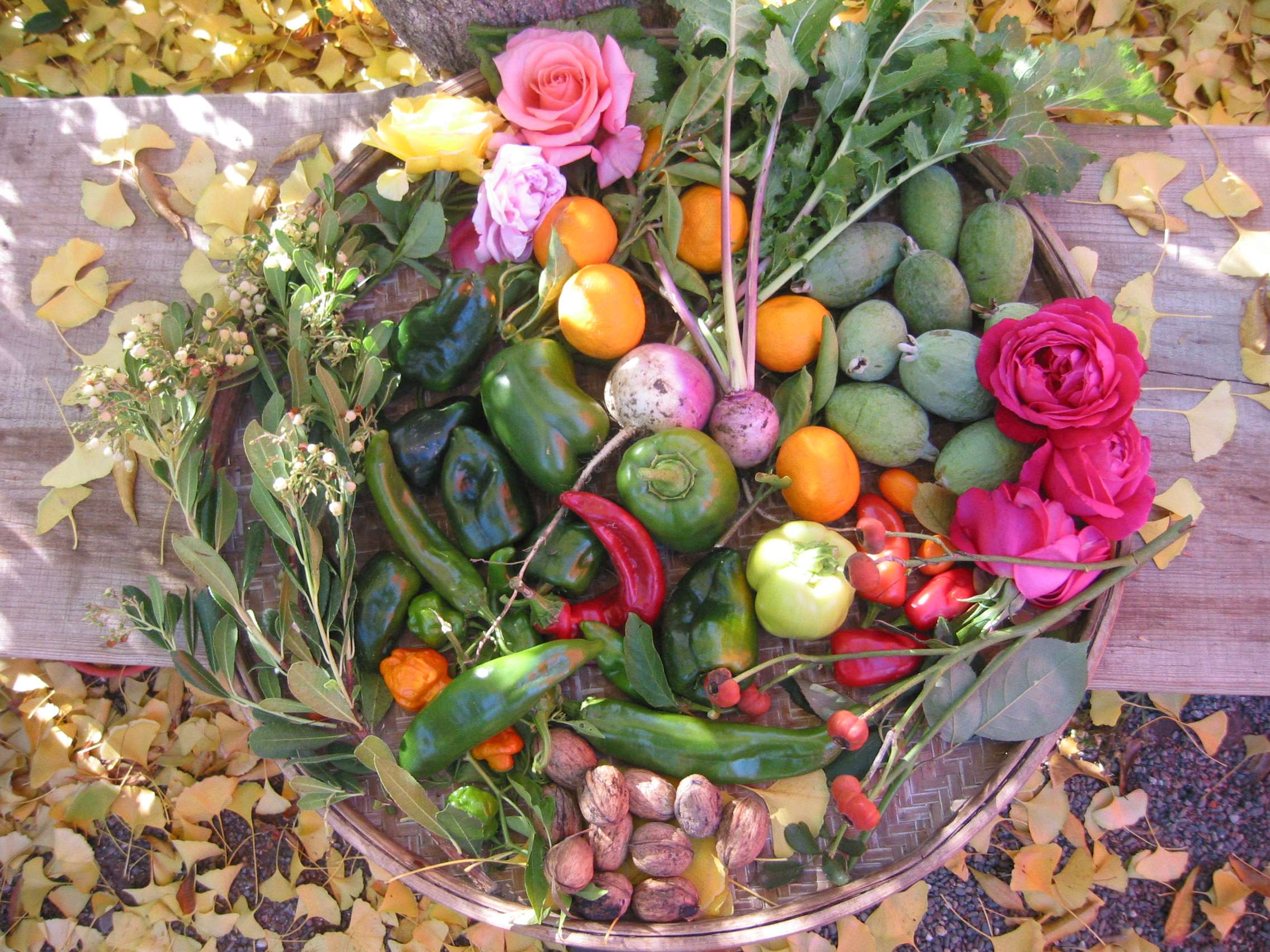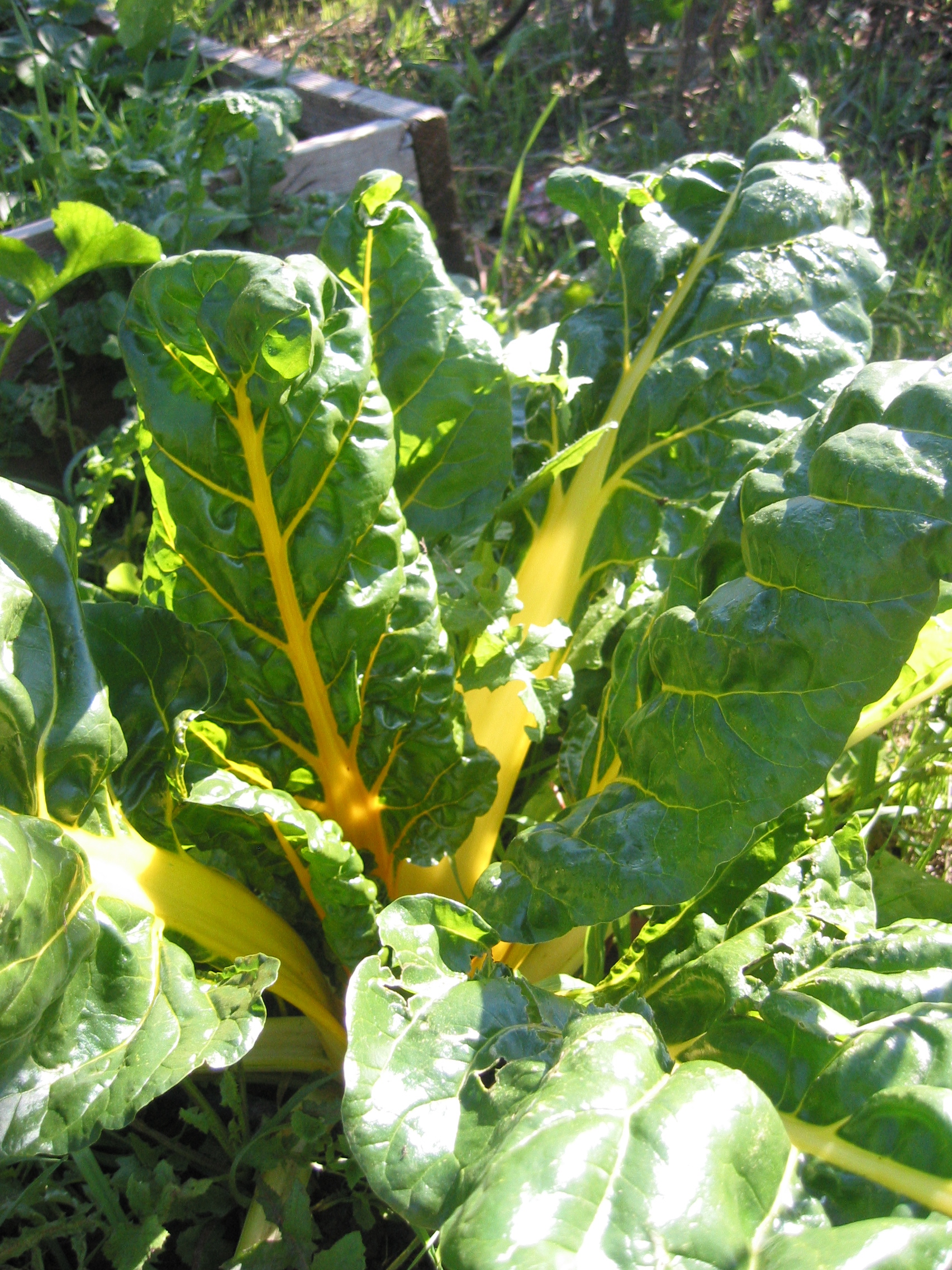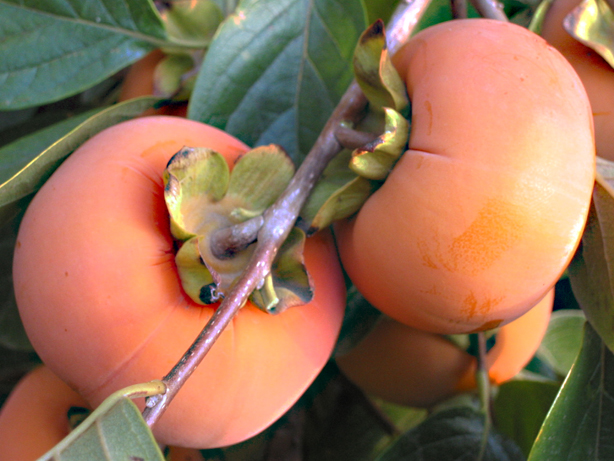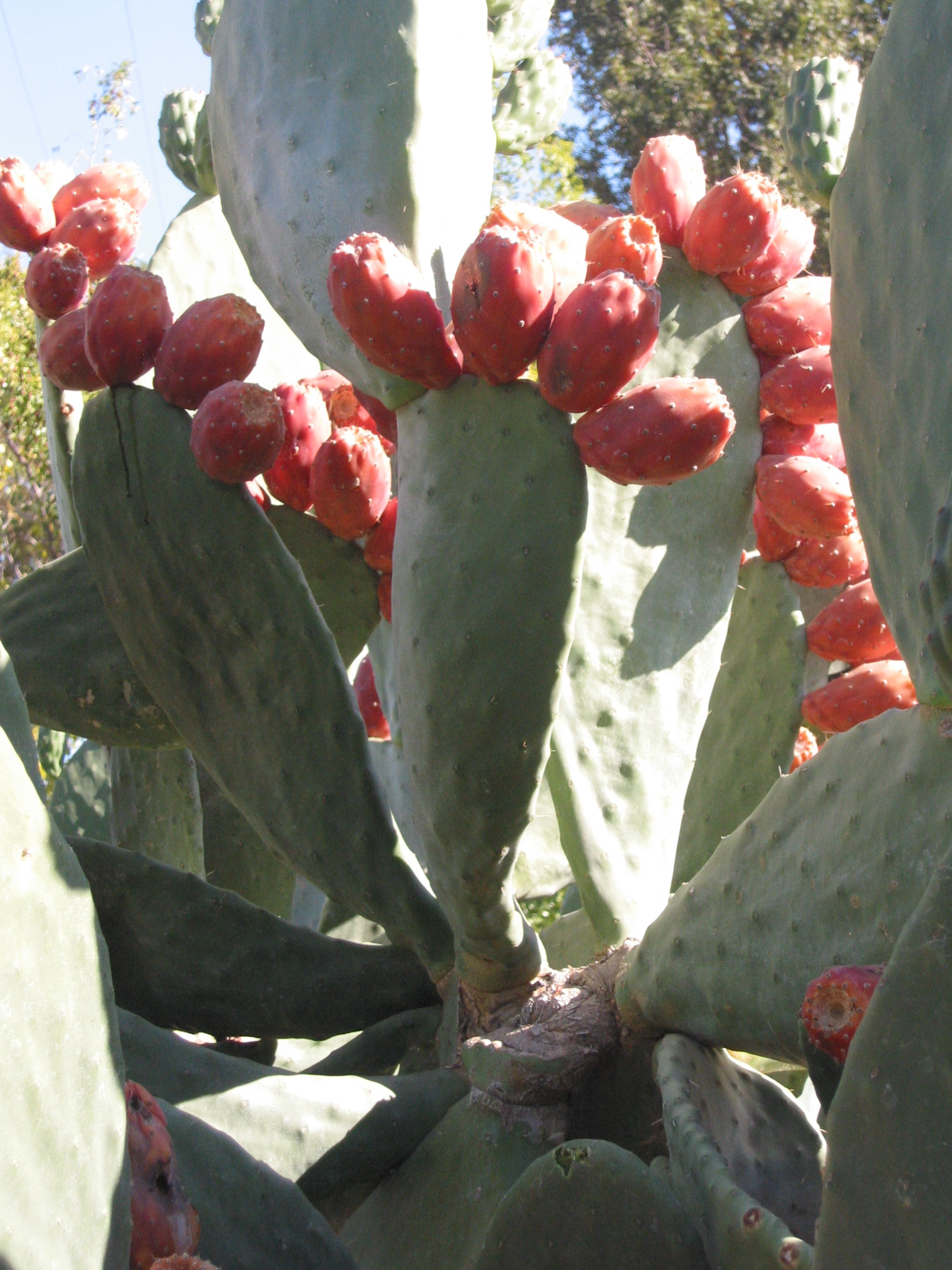Noshing in November!
From the Davis Enterprise, November 27, 2008
November is all about food. "You should make a harvest calendar," someone said to me recently: a list of what we can harvest, month by month, from our garden and landscape. I like a challenge.
It's easy to have bounty from your back yard, in, say, July. One peach tree can produce hundreds of fruit. With stone fruit varieties available to ripen as early as May and as late as October, a well-planned and rigorously pruned family orchard can readily yield from late spring into early fall. Citrus varieties ripen winter and spring, with some outliers into the summer and beyond (kumquats and Meyer lemons can have ripe fruit all year).
By now most gardeners have pulled their tomatoes, perhaps planted a few winter vegetables. The fruit trees are dropping their leaves. Perhaps grandmother made jams and preserves from the summer garden to enjoy during winter, but "putting food by" is a less common practice nowadays. What could be in your harvest basket in November and December?
 A November harvest basket!
A November harvest basket!
Clockwise from the upper rose: 'Owari Satsuma' mandarin, Feijoa; turnips, sweet peppers, rose hips;
walnuts; hot peppers; Arbutus (small white blossoms).
All surrounded by Ginkgo leaves.
The vegetable garden.
We almost always have sunny, dry weather here in the fall. While I have pulled most of my tomatoes, I was still harvesting fruit into November. Nights in the 40's and a couple of rainstorms put an end to that. But don't pull your pepper plants, if you have room: the green fruit that have set in late summer will continue to ripen nearly until frost.
This year we built a new vegetable planter primarily for root vegetables. I was curious if we could get winter vegetables going early enough to harvest for the Thanksgiving meal. Root vegetables like loose soil, and I decided that the easiest way to accomplish that was with a raised bed. So 2 x 12's were hammered into a 4 x 8 rectangle. The soil was amended with 2 parts compost to 1 part native soil, dug thoroughly to a depth of about 18 inches. A mini-sprinkler water line was attached and run nearly daily. Seeds were planted in early September: radishes, carrots, turnips, and beets. I could have planted parsnips, but my suspicion is that nobody would eat them; maybe next year.
Voila! Radishes were ready in October. Turnips will be on the Thanksgiving table, parboiled and then braised in butter and pepper. Beets are just bulging, so they will be later holiday fare. And the carrots look to be at least a month or so away. Brussels sprouts planted nearby have just begun to form their odd little side sprouts; six plants may produce enough for a small side dish now, with lots more to come as they mature up the stem. Lettuce and other salad greens can be harvested within a few weeks of planting; likewise Pak choi and Swiss chard. And all of these will continue to yield through the winter and spring, until hot weather returns.
 Swiss chard
Swiss chard
It's clear that, with potatoes saved from the summer harvest, and a little planning in August and September, an avid gardener could grow nearly all the Thanksgiving menu side dishes. Except cranberries. They need bogs.
The family orchard
Nut trees mark the fall across America: think pecan pie. Walnuts begin to drop from the trees in October. Commercial harvest is all done, but I can pick up a bagful under my back yard walnut anytime into December. Pecans grow and produce well here, but don't drop until November, with some varieties even later. The only problem is, everything likes pecans. I have watched small flocks of bluejays (actually, scrubjays are what we have here) flying through my orchard, knocking the nuts from their hulls and then pecking out the rich kernels. Anything they leave behind, the ground squirrels devour. But I may find enough for a pie.
Apples and pears are popular fall fruit in northern climates, and can be grown here. Pests and diseases are an issue with both, requiring more spraying than many gardeners want to do. But the closely related quince is a very tough, pest-resistant fruit tree. Quince is a shrubby tree with multiple stems, and a single plant can produce a hundred fruit or more. Beautiful large blossoms in spring are a nice bonus. Other than jam, what does one do with quince? Cooked quince turns pink and is very aromatic. Quartered or sliced, the fruit can be put under or around pork roast. Thanks to Deborah Madison's Vegetarian Cooking for Everyone, I learn that quince can be cooked in applesauce to add distinctive fragrance and color.
 Pomegranate 'Wonderful'
Pomegranate 'Wonderful'
Two heavy-yielding fall fruit trees are persimmons (Diospyros species) and pomegranates (Punica granatum). Both have become very popular in recent years: plant, water, and wait a couple of years. No special care required. But I often wonder if gardeners realize how much fruit each can produce! Don't worry: winter songbirds will enjoy any fruit you leave behind.
Fuyu persimmons, which can be picked while firm, are eaten raw or substituted in spiced pear recipes. Hachiya must be pulpy soft, but have richer flavor for cookies and puddings. Pomegranates are a bit more work to eat. A new "seedless" variety called Angel Red has soft seeds and about 30% more juice.
 Fuyu persimmons
Fuyu persimmons
Citrus are mostly winter fruit, but Owari Satsuma mandarins are sweet enough to harvest just before Thanksgiving here. And now we know that they are extra-good for you: "Ten ounces of mandarin juice contain as much synephrine as one over-the-counter decongestant pill, according to the study" (Sacramento Bee, Nov 21, 2008). Mandarins are slow-growing, easily kept as shrubs, very ornamental, and nearly the hardiest citrus: only kumquats are more tolerant of winter cold.
Kiwi fruit is harvested from the vines in October and November. The tough skin enables the fruit to sit for weeks in storage, so you can enjoy kiwifruit through the winter. Kiwi vines (Actinidia species) can be tricky to establish; the young plants need lots of water and seem to benefit from a little shade in the first year. You need a male and a female. Give them as much room as a grape vine, and be prepared to prune a lot of tangled growth every winter.
In the landscape
Wandering through the shrubbery, I realized there were a couple of plants that I always overlook when discussing edibles.
Lying on the ground under my Pineapple guava (Feijoa sellowiana) were several dozen plump, oblong, green fruit. Feijoa is not a true guava, but is a shrub that is hardy enough to grow here: drought-tolerant, sun-loving, with a moderate growth rate to 10' or more. Mine is trained as a small tree. Most are grown from seed, so fruit quality is variable, but some varieties have been selected for fruit size, quality, and consistent production.
Feijoa fruit has a tough skin, so it can store for a few weeks. My mother used to make chutney from feijoa, but most people just cut the fruit in half and scoop out the tart/sweet pulp. The flowers are also edible, with soft sweet petals.
 Prickly pear (Opuntia) fruit
Prickly pear (Opuntia) fruit
The strawberry tree (Arbutus unedo) is grown as an ornamental. Tough and drought-tolerant, it has clusters of winter flowers and showy fruit and mahogany-colored bark, with tree-sized and dwarf forms available. Most people don't know that the fuzzy orange berries are edible. They need to be soft for maximum sweetness, and individual trees vary in quality.
Is that everything on the November comestible list? No! As I was standing near my mandarin tree, sampling the fruit, I heard a commotion along the county road. Local farm workers are aware of my large clump of Prickly pear (Opuntia), the big flat cactus common in Mexico and Southern California. They have always been welcome to help themselves to the new shoots in spring for nopales. I've always been leery of the fruit since a friend of mine went to the hospital as a kid after eating one (hint! you must remove the spines first!). These men were gouging out the spines with their pocketknives and then eating the fruit with relish.
Prickly pears on your Thanksgiving table?
© 2008 Don Shor, Redwood Barn Nursery, Inc., 1607 Fifth Street, Davis, Ca 95616
www.redwoodbarn.com
Feel free to copy and distribute this article with attribution to this author.
Click here for Don's other Davis Enterprise articles
